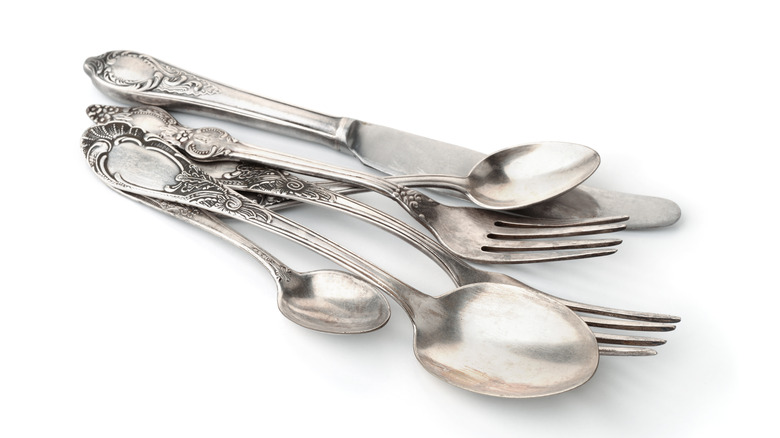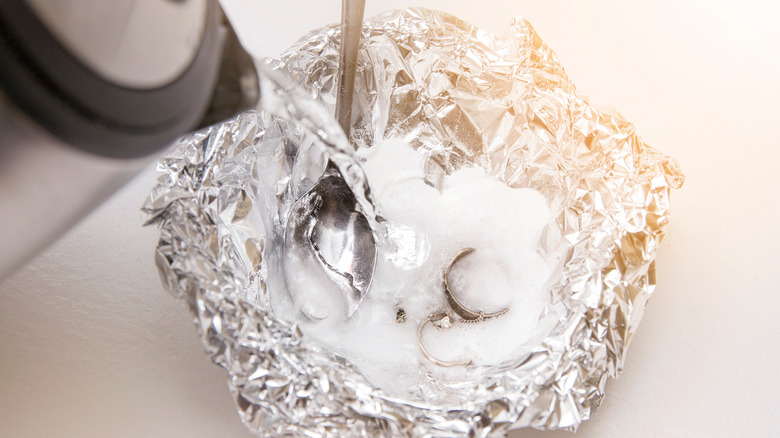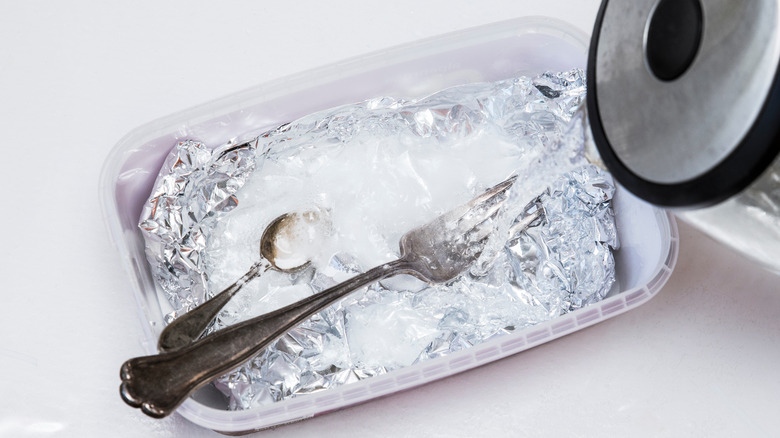The Best Way To Clean Your Silverware
Keeping your silverware clean ensures it lasts longer and is in the best possible condition, no matter when you last used it or if you use it regularly. According to Grove Collaborative, cleaning your silver regularly is integral to keeping it tarnish free and looking great. They note that it is essential to keep it clean at all times since, with time, it will lose its sheen and brilliance. This happens as a result of a chemical reaction that takes place between the silver and the sulfur that is found in the air. They recommend cleaning your silverware at least once a year for good maintenance.
While there are many effective ways to clean it, as The Happy House Cleaning Services suggests, including many home remedies such as laundry detergent, cornstarch, ketchup, and even toothpaste, we think there's one way that triumphs over the rest. Keep reading to find out how to best keep your silver clean and why this method works.
Aluminum foil and baking soda to the rescue
According to Food52, the number one method that effectively cleans your silver involves using aluminum foil, baking soda, and hot water. To begin with, you'll need to gather some items. You will need a dish, preferably a casserole dish or anything big enough to lay your silver in, baking soda, and some hot water. (If you don't have a big enough container, they suggest soaking your silver in your sink with the baking soda and hot water solution). So, begin by lining the bottom of your dish with aluminum foil. You could also use an aluminum dish and skip the aluminum foil.
Next, dust a generous amount of baking soda and place your silver in the dish. Make sure every piece of silver touches the aluminum foil. Now, pour the hot water in and leave it to cool. Once it has chillled, you are ready to remove your silver and dispose of the aluminum foil and baking soda. Make sure you clean your silver with a cloth before using it.
Why does it work?
As Bellatory explains, there's quite a bit of science behind the whole process. In terms of chemistry, tarnish is known as silver sulfide, but it is possible to convert it back into the light gray material. In a saltwater bath, tarnished silver serves as the cathode, while aluminum serves as the anode.
While the two are brought into close contact with one another, the salt in the water makes it easier for electrons to flow between the silver and the aluminum. The silver ion is converted back into silver, and sulfide ions are generated as a byproduct of the reaction. These bond to aluminum, which causes it to rust, while the silver polishes up well. Pretty cool, huh?
Anita's Housekeeping notes that you should try to use boiling hot water as it is much faster at removing tarnish and cleaning your silver compared to regular tap hot water. They also say you can use white vinegar, salt, or lemon juice instead of the baking soda if you don't have any lying around.


